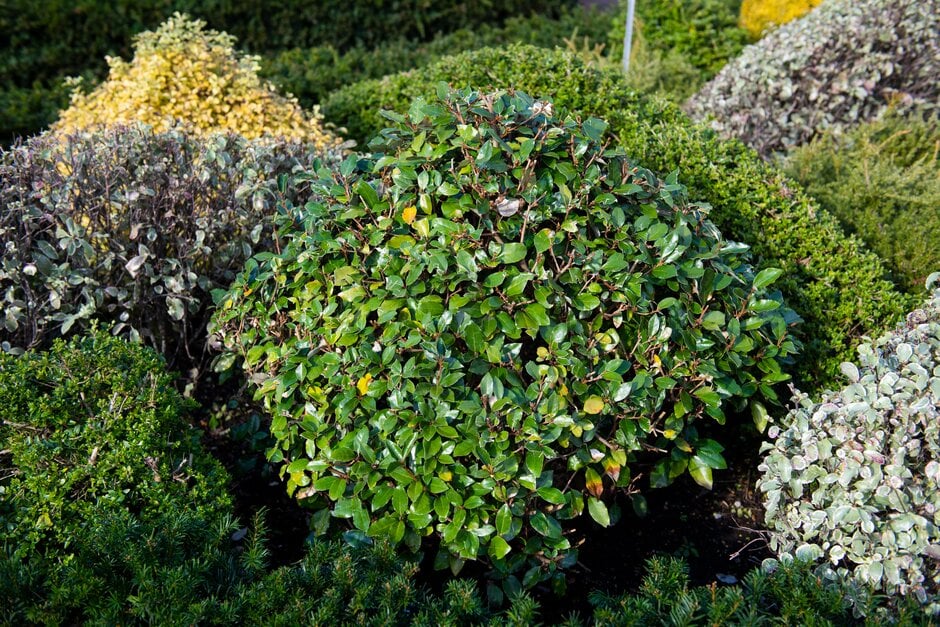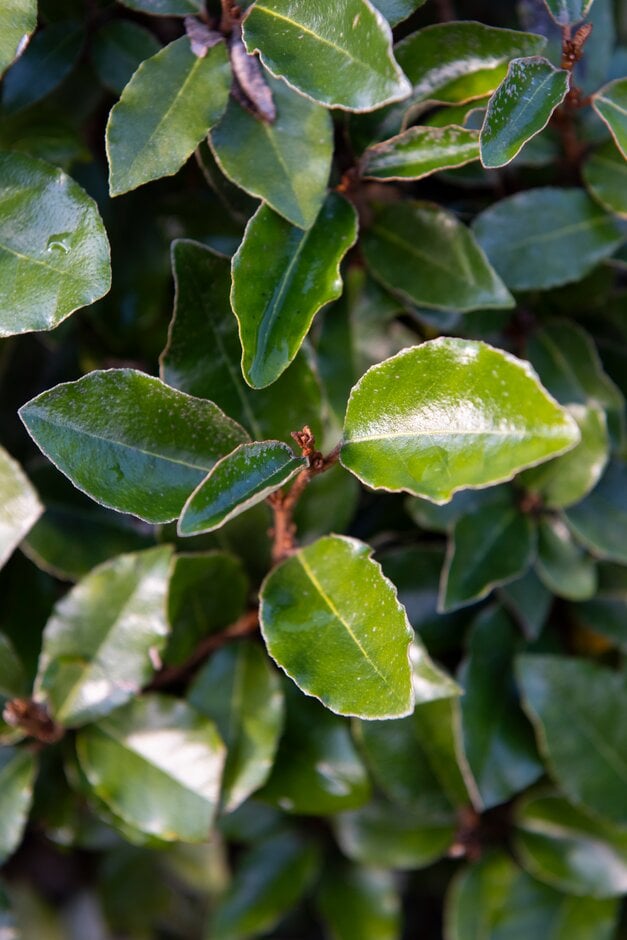Elaeagnus × submacrophylla 'Compacta'
oleaster 'Compacta'
A fast-growing, dense and compact evergreen shrub, with narrow dark glossy green leaves with a silvery sheen. Small, scented white flowers appear in the autumn
Size
Ultimate height
1–1.5 metresTime to ultimate height
5–10 yearsUltimate spread
0.5–1 metresGrowing conditions
Moisture
Moist but well–drained, Well–drainedpH
Acid, Alkaline, NeutralColour & scent
| Stem | Flower | Foliage | Fruit | |
| Spring | Green Grey Silver | |||
|---|---|---|---|---|
| Summer | Green Grey Silver | |||
| Autumn | White | Green Grey Silver | ||
| Winter | Green Grey Silver |
Position
- Full sun
Aspect
North–facing or South–facing or East–facing or West–facing
Exposure
Exposed or Sheltered Hardiness
H5Botanical details
- Family
- Elaeagnaceae
- Native to GB / Ireland
- No
- Foliage
- Evergreen
- Habit
- Bushy
- Genus
Elaeagnus can be deciduous or evergreen shrubs or small trees, with simple, often silvery-scaled leaves, and small fragrant tubular flowers borne in clusters in the leaf axils, and followed by small juicy fruit
- Name status
Not established
How to grow
Cultivation
Grow in well drained soil in full sun or partial shade, tolerant of dry soils and coastal winds, although may become chlorotic on shallow chalky soils. This variety is also good for containers and can be clipped into standard plants
Propagation
Propagate by semi-hardwood cuttings
Suggested planting locations and garden types
- Coastal
- Cottage and informal garden
- Wildlife gardens
- Patio and container plants
- City and courtyard gardens
- Low Maintenance
- Flower borders and beds
- Hedging and screens
Pruning
Pests
May be susceptible to eleagnus sucker but generally pest-free
Diseases
May be susceptible to honey fungus, coral spot or leaf spot (fungal) see leaf damage on woody plants
Love gardening
Sign up to receive regular gardening tips, inspiration, offers and more
View our Privacy Policy
Get involved
The Royal Horticultural Society is the UK’s leading gardening charity. We aim to enrich everyone’s life through plants, and make the UK a greener and more beautiful place.

